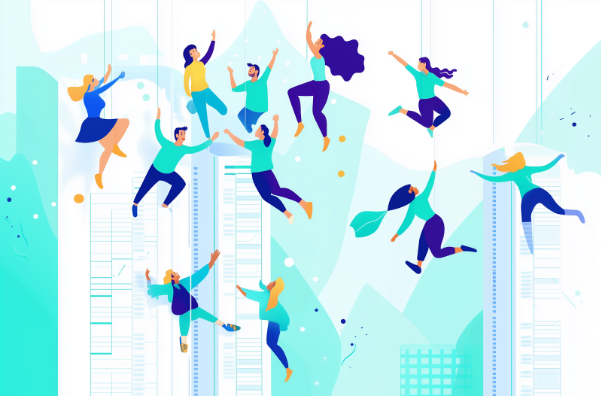More than just software

Forbes recently released an article on the future of software development, looking at what customers and companies will increasingly expect to see. Of the five predictions, four were about creating good customer experiences and helping clients and users understand the data input.
Only one was explicitly about the product itself.
That future, however, is already here. Creating an all-in-one programme that replaces traditional methods is no longer a sure sign of success in an influx of tech-led and app-based solutions. For their money, companies want software developers who can work alongside them to avoid the steep (and often costly) learning process when adding in a new programme.
And if the price is right, they might also expect some tinkering under the hood to make the software suit.
Feeling supported.
Software is common in most workplaces, and with seemingly endless product options, it's hard to know how well you will be supported once you have adopted the new tech. As software becomes more complex it can often be time-consuming to learn how to get the best out of the system. Even then, the company in question may end up with only one or two key users that know how to use the software, which can cause a bottleneck in the workflow.
Here are a few key areas to look at before you take on new software, which help increase the rate of adoption and lets others see the benefits of the software faster:
- Interface - Software that is modern (and with an intuitive interface) will be easier for users to pick up and understand, as many people will skip tutorials and want to jump straight into the system, learning as they go.
- Help centre - Help centres can be a combination of step by step blogs or videos to support the users.
- Live chat - Live chats can be useful, especially with a chatbot supporting some of the more basic questions. A dedicated service team can then help to answer more unique enquiries.
- Email support - Email provides a forum for long questions and gives customers a feeling of support.
- Phone support - However, some will prefer over the phone assistance in real-time.
- Customisation - Some companies may require customization, which can be offered as an additional service. Assisting with customisation means that a company can adopt a new system with extra value, whilst it still blends in seamlessly with their existing processes and designs.
- Onboarding - Some companies will offer a customer success manager who can help with the adoption of the new software in your company. Enlisting such a person means you have someone that knows you as a company and how you will use the software, so when it comes time to troubleshoot or add further customisation they’re well apprised of the situation.
At Datanest, we offer the full suite of support to help our customers adopt our software, which is something the majority of companies won’t do, providing only one or two of these options.
The Datanest customer journey.
There’s a reason software companies like to send out free trials or present over a call — it gives the software a chance to speak for itself.
From when we first reach out or are referred by other clients, we begin several conversations, including walking through a full demonstration of what datanest can do and addressing any needs or concerns. It’s here we figure out exactly what solution Datanest is being brought in to solve and where we can begin to tailor the software suite to suit.
In particular, working around other existing programmes and figuring out who will use the modules is a big part of the conversation. Although Datanest is purposefully designed to work alongside and integrate with other software, often the problem is one of data transference and familiarity with old systems.
Handling that transfer is partly why we like to extend the client relationship past the point of purchase. Previously, we’ve worked with clients to create bespoke templates to match their pre-existing data collection and reporting software. The key difference is the degree of data output and the greater capability Datanest offers. We also like to stick around to ensure that the transference process happens smoothly from existing information libraries.
Another important point for software developers is that we’re not selling a finished product. There are ongoing, changing needs within any software solution, which means altering the product to allow for further storage capacity. We’re also constantly ‘tinkering’ with Datanest itself, using client experiences to enhance the modules and add new features which do what the software originally set out to do — make things easier that don’t have to be as hard.
Whatever the tool, communication is key.
The end result of any software is that it has to work for the majority. This is why successful programmes like Blink and Redbooth, which aren’t strictly communication-based, put so much effort into their user-friendly features.
Similarly, Datanest is designed to be looked at by multiple minds. The software envisions multiple role titles and users, from the editing functions in hubs and deliver to the ability to share and upload from anywhere. Beginning with data collection and ending with final reporting, datanest is an overall company tool that’s built for collaboration.
If you want to know more about Datanest, or book in a demonstration, get in contact. Or, you can try a free trial for 14 days.
Sources cited:
- Port, Chris. “The Software Company Of The Future Will Be Built On Customer Experience” in Forbes. 1st of May, 2022. Link: https://bit.ly/3PrCDNP





.png)

